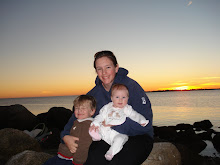Steve Jenkins has become one of our favorite non-fiction authors since we first read Hottest, Coldest, Highest, Deepest two summers ago. We've read many of his books ever since, loving each one and learning all kinds of new animal facts and scientific tidbits along the way. (Actual Size is a particular favorite of my kids!) My children both love learning about nature, and my son is particularly obsessed with animals: big ones, small ones, exotic ones, extinct ones -- you name it, he can probably tell you about it. (And if he can't, he'll want to learn all about it.) When my husband saw that Steve Jenkins was releasing The Animal Book this past fall, he knew just what to get our son for his 6th birthday. What a fabulous book!
If your child loves learning about animals, this book is a must read. It provides hours of educational entertainment and Jenkins' paper collage artwork is simply exquisite. I can't imagine how many hours it must have taken him to create this book! We recognized some of the artwork from other works (such as Prehistoric Actual Size -- another recent birthday book), and there are many fabulous diagrams throughout the book, as well: an ecological pyramid (from producers up through apex predators), a comparison of animal sizes (both modern and extinct), and a timeline of animal lifespans, to name just a few. I particularly love the pages about the forest food web (which inspired my son to draw his own food web the other day), comparative pie chart of types of species, and the timeline of life, including a history of the earth in 24 hours. If the earth was formed at 12:00am, the first single-cellular life appeared around 5:00am, dinosaurs appeared around 10:50pm, and modern humans didn't enter the picture until 4 seconds before midnight. Pretty cool, isn't it?
Just to clarify, The Animal Book isn't an animal encyclopedia, per se, but there are over 300 animals featured within its pages. There is a glossary at the back and additional facts about all of the creatures mentioned, along with the pages on which they can be found. I could go on and on about this amazing book, so to help wrap things up here, I'll highlight a few of my other favorite features about this book below:
- Its contents are sorted by themes rather than particular species or types of animals. Categories include family, animal senses, predators, defenses, animal extremes, and the story of life. I challenge anyone to pick up this book and not learn something new and amazing.
- Jenkins starts off by telling us about how his love of animals and art was formed. He includes a picture of the first animal book he created -- 103 Favorite Animals -- on graph paper when he was 6 years old. My son gets such a kick out of this, and I love that it lets him see that even famous animal artists once drew the way he does.
- The section at the back of the book about the history of life on earth, which includes simple yet thorough explanations and diagrams of such topics as natural selection and variation and mutation. This would be great to use in an elementary school science class.
- The fabulous chapter at the end of the book about making books. Here, we get to see how Jenkins creates his books, from how his initial ideas are formed, the research process, design stages, and ultimate publication. Really interesting stuff, especially for aspiring young artists and illustrators!
It's obviously clear that we love this book and think you'd love it, too. I'd say it's great for any animal lovers ages 5 and up. I'll leave you with a few examples of some of the amazing animal facts we've learned while reading this book, many of which completely blow my mind. We hope you love this book as much as we do!
- 97 out of every 100 known species of animals are invertebrates
- One out of every 4 living things is a beetle -- there are over 350,000 species of beetles out there!
- A termite queen may produce as many as 1,200 eggs an hour, laying them around the clock for 30 years or more
- Giant clams have 100s, even 1000s, of eyes
- For every species alive today, there are probably 1,000 that have died out or gone extinct













1 comments:
Wonderful books; I love anything with animals.
http://www.scalelily.com/index.html
Post a Comment